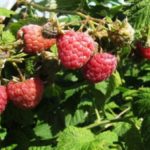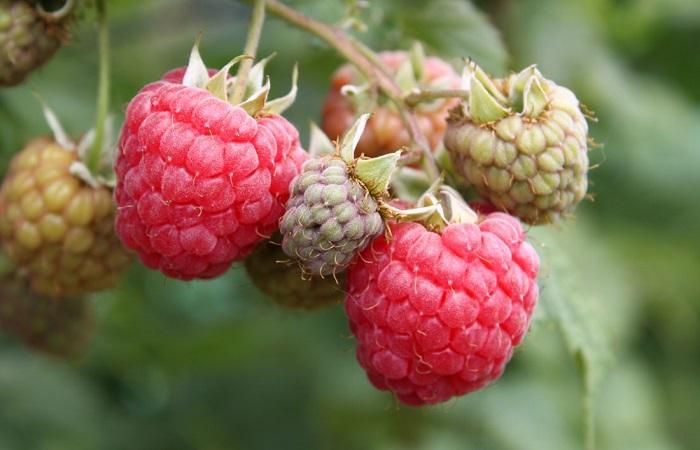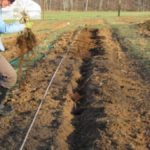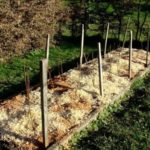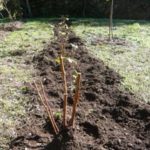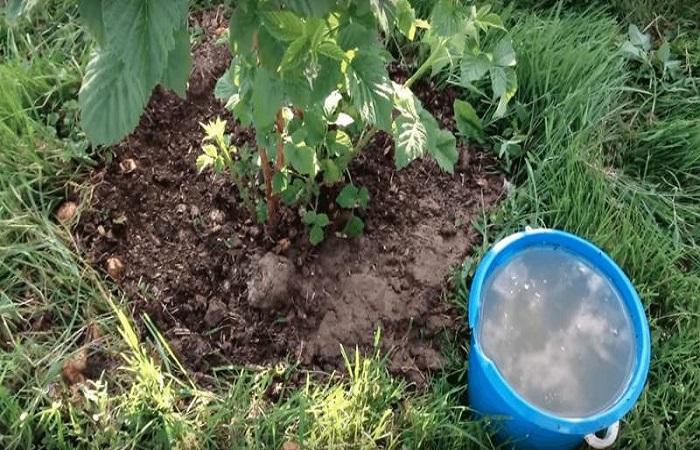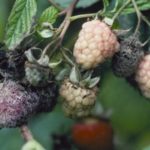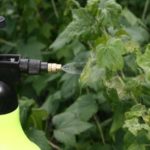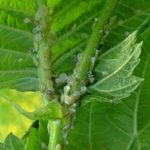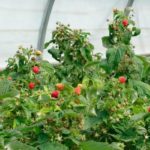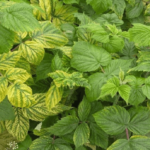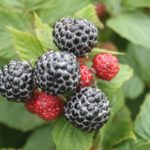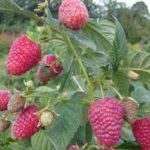The description of the raspberry variety Octavia suggests that this is a non-repairing variety of late ripening. Let's look at the characteristics of the variety, its advantages and disadvantages, proper cultivation and care, and how to plant and propagate plants in a garden plot. How to protect raspberries from pests and diseases, how to harvest and store the crop.
Description and characteristics
Raspberry Octavia was bred in England in 1992, the parent forms were the Glen Ample variety and the hybrid EM 5928-114. Plants bear fruit from mid-July to early August, just at the time when early varieties have already borne fruit, and there is no second harvest of remontant varieties yet. Productivity from one bush is 3-3.5 kg.
The variety is recommended to be grown in the southern and central regions, in garden plots for personal use or for selling surplus on the market. Berries can be eaten fresh, canned or frozen. Berries can be collected within 4-5 weeks.
The stems of Octavia raspberries are flexible and powerful, growing up to 2 m in height. Because of this, plants are grown on a trellis. The thorns on the shoots are located at the bottom. Fruiting shoots are 15-20 cm long. Ripe fruits are red, without shine, conical and with a rounded base. The weight of each berry is 5-6 g, the pulp is dense, the seeds are small. Ripe fruits do not fall off the branches and do not rot after rain. They tolerate transportation well over short distances.
Advantages and disadvantages of the variety
Advantages of the Octavia variety:
- large fruit;
- excellent taste of fruits;
- uniform size and correct shape of berries;
- fruits do not bake in the sun;
- drought resistance;
- cold resistance.
Disadvantages of the variety:
- average yield;
- requires constant care and feeding;
- may suffer from gray and root rot.
Growing and caring for Octavia raspberries
In household plots and summer cottages, agricultural techniques for growing the variety include proper planting, watering, fertilizing, loosening, pruning, and covering for the winter. If you need to propagate these raspberries, then this can be done easily.
Timing and landing
Like many other varieties, Octavia seedlings can be planted in spring or autumn, the main thing is that the plant is dormant. If the seedlings already have blossoming leaves, they will take root worse. In spring, you can plant after the snow has melted and the earth has dried out a little, but the winter moisture has not yet evaporated. In the fall, you should plant it a month before the cold weather so that the seedlings have time to take root.
Trimming
Raspberries are also pruned in autumn or spring. Remove damaged, fruit-bearing, signs of disease, broken or simply unnecessary ones. An adult Octavia raspberry bush should consist of 5-7 healthy shoots from last year. All cut shoots must be removed from the raspberry tree and burned.
Watering and fertilizing
The Octavia variety loves moisture; in the southern arid regions, plants need to be watered frequently, both before and after rooting. Raspberries need moisture especially during flowering and berry setting. In drought for every sq. m of plantings you need to pour out 3-4 buckets of water. The next watering should be done when the top layer of soil becomes dry.
It is best to water Octavia raspberries using a drip irrigation system. Less water will be consumed, as it will evaporate more slowly.
Along with watering, you can feed raspberries with liquid mineral fertilizers.Timing of feeding: at the beginning of the season, after flowering and after the formation of ovaries. During the first feeding, nitrogen fertilizers should be used, then for the formation of fruits, raspberries will need phosphorus and potassium fertilizers.
Wintering
After pruning, the raspberry root zone is covered with winter mulch from fallen tree leaves, straw, sawdust, and peat. Its layer should be larger than what it was in the summer. Usually shoots are buried to a height of 15 cm.
Reproduction
Raspberry Octavia produces many shoots that take root well if rooted. Transplanting rooted shoots is the main method of propagation. The shoots are bent to the ground in the summer; by autumn, roots will appear on them. The transplant is carried out a month before the cold snap.
Protection from diseases and pests
The main diseases of Octavia raspberries - gray and root rot - develop during the rainy season. If the humidity is high, you need to spray with fungicides, even if there are no symptoms of the disease yet. During the ripening period of berries, you need to use biological preparations with minimal toxicity.
Harvest and storage
The fruits do not ripen at the same time, but only completely ripe ones should be collected. Those intended for storage are collected in plastic containers and placed in a cool place. Chilled raspberries can be stored for more than a week without loss of quality, taste or appearance. Overripe raspberries make excellent homemade preparations and sweet desserts.
The Octavia variety is well adapted for the Russian climate, for the southern and central regions. It is grown using standard technology, mainly on trellises. The variety does not have very high yields, but according to its characteristics it is quite suitable for home cultivation.For the average family, a small bed of raspberries will be enough, which can provide the owners with berries in the summer and provide raw materials for canning for the winter.



